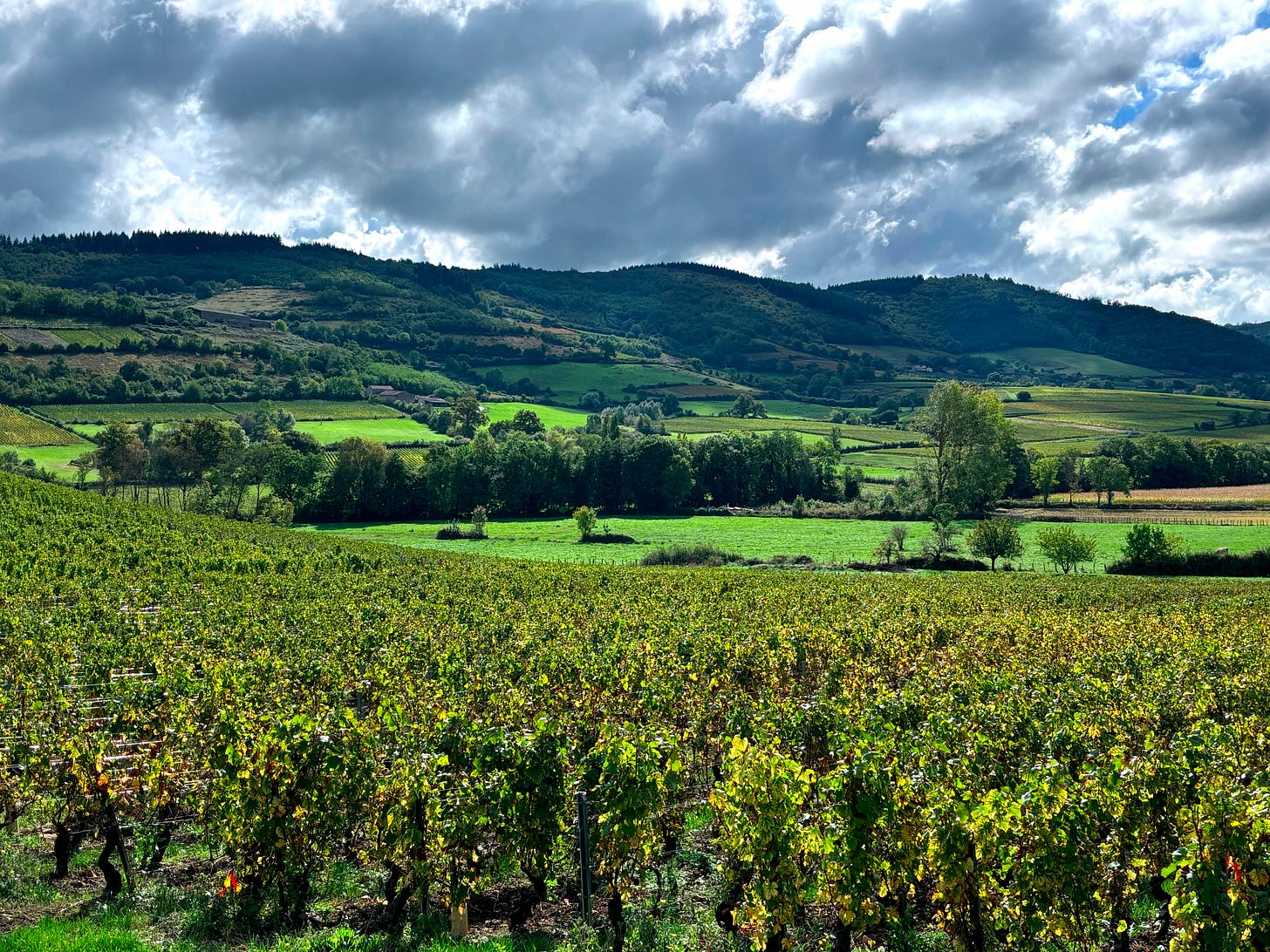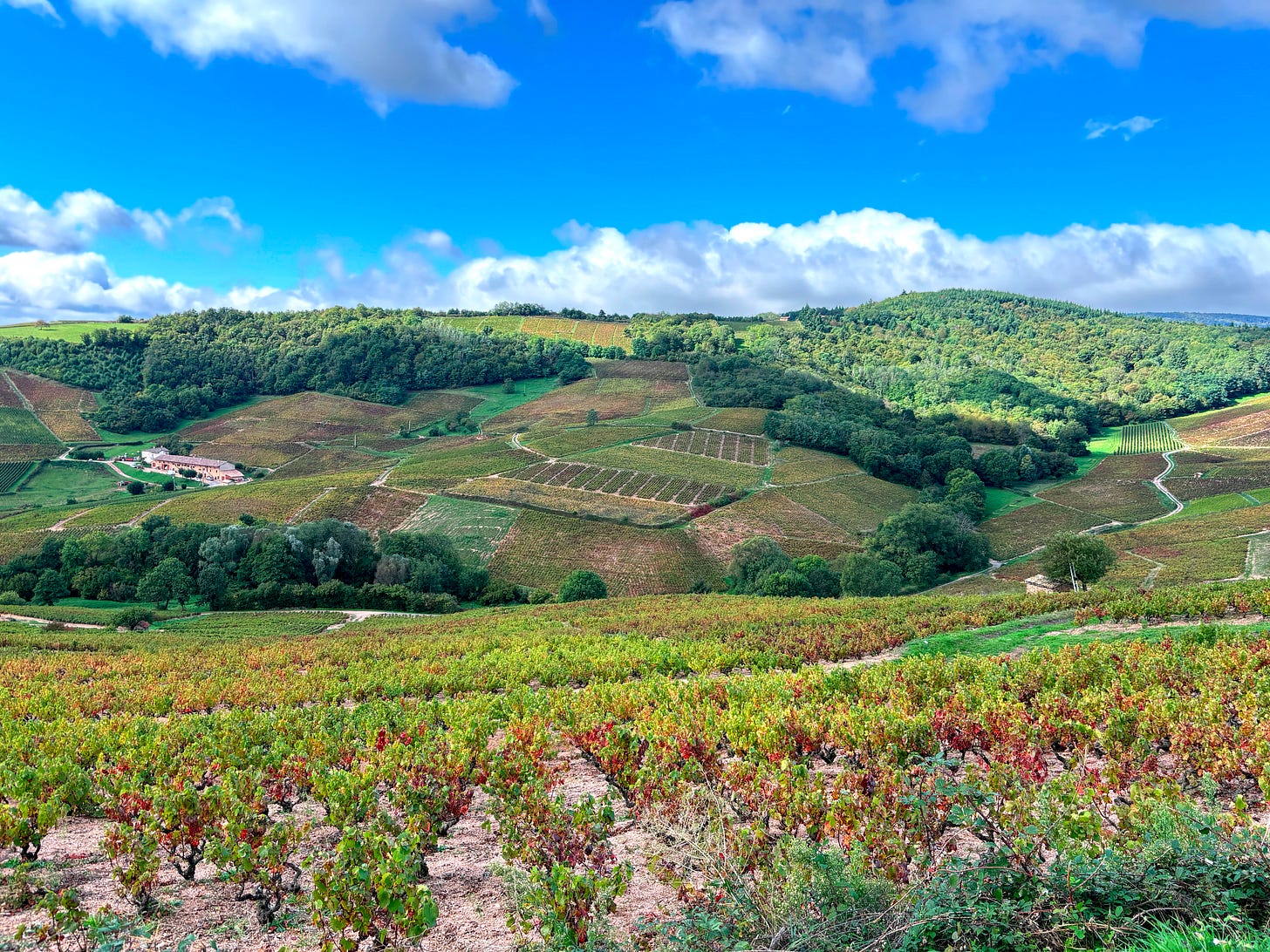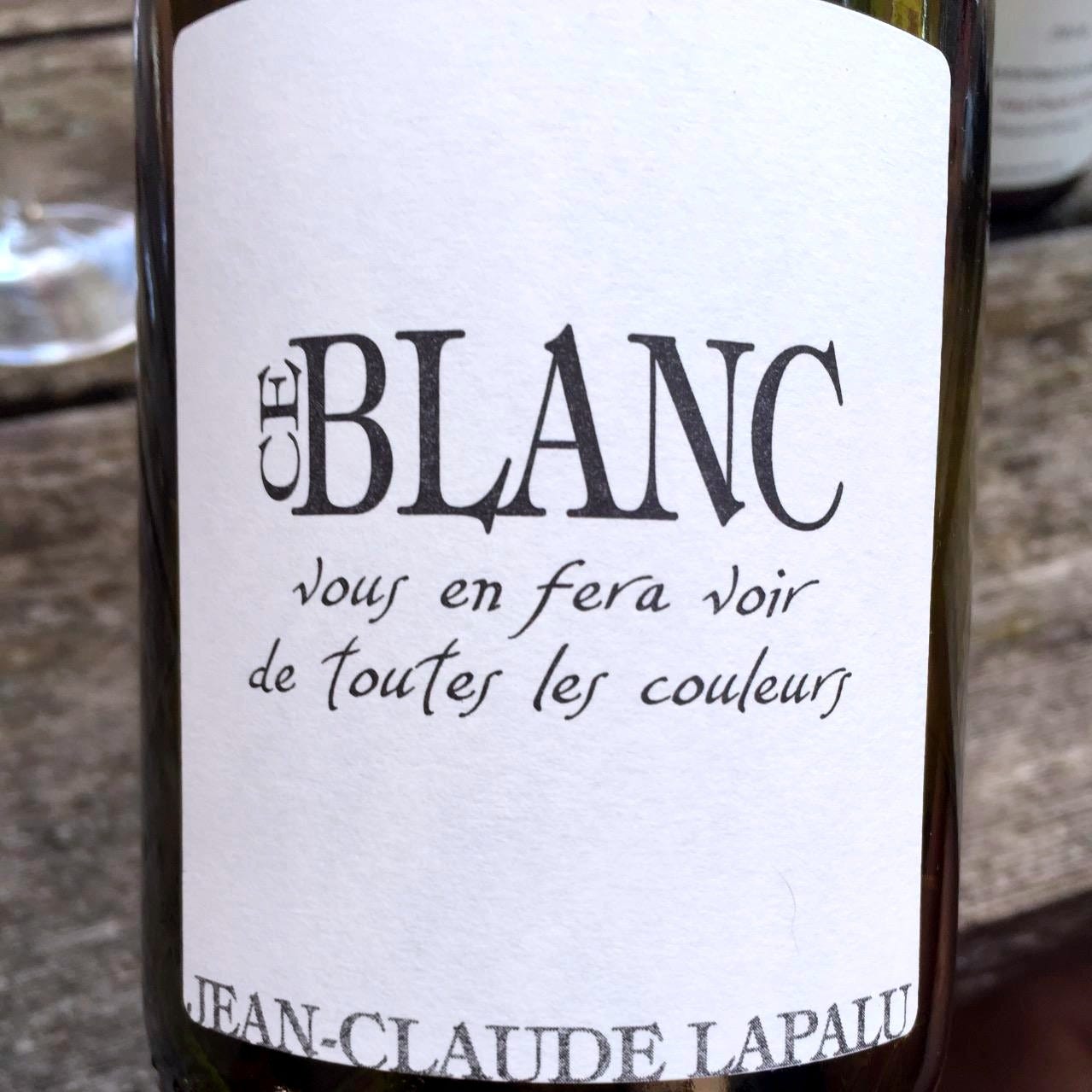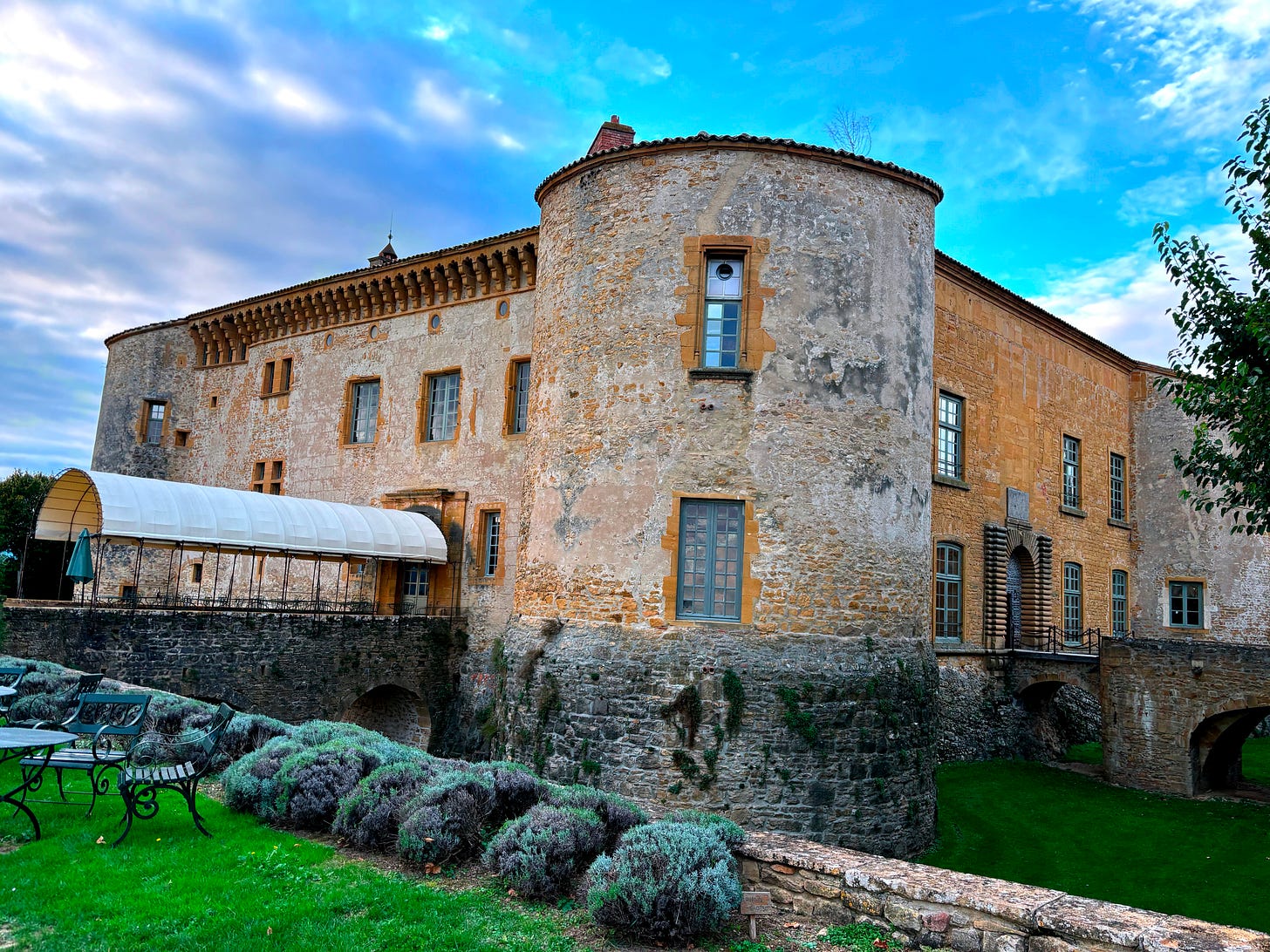The joys of vining and dining (4)
My adventures in the vineyards of France
This is the fourth part of a series around my adventures in the vineyards and culinary meccas of France. Having begun this journey of past pleasures, souvenirs, discoveries, and joys, I’ve realised there’s no way of doing justice to any of it without giving a bit of detail, which means that limiting myself to only the highlights, of which there are so, so many, means I may be at this for much longer than anticipated. Reliving these privileged experiences, the stuff dreams are made on, reminds me of how fortunate I’ve been, and how enriching wine and gastronomic touring can be. This post covers the Beaujolais part of our adventure, and among other things, includes a story about ‘cosmoculture’.
It is also an invitation to join me to expand your viticultural horizons by booking one of our regional wine tours, of which the following two are but a sampling:
You can also contact me (geoffrey@tastings.fr) to have us organise your personalised, tailor-made French wine and gastronomic tour with exclusive entrances to some of the greatest wineries in the world! Including, and not limited to, Alsace, Champagne, Burgundy, Beaujolais, Central, Eastern and Western Loire, the Rhone, Provence, Languedoc Roussillon, and the regions that created the original fame of Bordeaux - Bergerac, Cahors and Gaillac.
The last post, which is about a wine & gastronomic ‘tour de France’ I organised with my friend Aaron Pott in 2015, ended with us arriving in the bucolic beauty of Beaujolais. This is the rest of that adventure.
Of all the wine regions of France, Beaujolais is perhaps the most misunderstood, underrated, and under-appreciated. In my own humble opinion, some of the greatest wines in the world can be found here, and yet most people have only ever heard of Beaujolais Nouveau. Which wouldn’t be a bad thing if most of them were real wines, made honestly, organically, and without artifice. But the overinflated Beaujolais Nouveau balloon popped some time ago, and so that once exuberantly joyful festivity has become something of a chimera, a slight disappointment.
There is never really any joy in wines that are produced with insecticides, pesticides, fungicides, and herbicides, and so the exuberance that was once the central emotion of this bacchanalian event has been soured by one of life’s worst scourges: mediocrity. Which isn’t to say there aren’t any joyful Beaujolais Nouveau wines, because there are. They’re just harder to find, and the forgiving, apologetic, indulgent, accepting, overly-eager-to-party public have wakened to the tastes of real wines, of natural wines, and so are not as easily duped as they once may have been.
And speaking of natural wines, we have Beaujolais to thank. You can read all about that here, but I digress…
Following our tasting and feast with Jerome Guichard of Domaine Sauveterre in the Maconnais, and a brief visit of the ruins of Cluny, once the largest cathedral, or in fact building of any kind anywhere in the world, we made our way through the rolling green of the Beaujolais hills to Saint-Etienne La Varenne in the Brouilly appellation to visit Jean-Claude Lapalu. It was Saturday, and we found him on the patio of his house, which is attached to his winery, quietly waiting for us. We had never met, but I was already very familiar with his wines and after introductions and a brief exchange around the history of the property, we tasted five wines, starting with a Beaujolais blanc.
I will never forget the first time I tasted a white Beaujolais, which happened during my time as a barge captain, cruising the inland waterways of Burgundy. Like most people I think, I was unaware there was any white Beaujolais, and though it is but a meagre percentage of the wines produced there, it’s always a delight (when it is made by dedicated, passionate, honest, real winemakers who don’t abuse their soils or resort to the artifice of additives).
The mood gradually evolved from courteous politesse to mirth, exuberance, and the kind of recognition that happens when wine enthusiasts meet winemakers dedicated to producing the best of what nature offers them. As the domain is the epitome of unpretentious, I think everyone was more than a little surprised by the quality of the wines, and so we left with several cases. Sadly, I have no pictures to share of this visit, other than bottle labels Aaron assiduously documented throughout.
Our journey through Beaujolais was but one night, spent in the majestic, and magnificently restored Château de Bagnols. This is undoubtedly one of the most impressive Medieval châteaux in France to have ever been transformed into a hotel, and in the hands of Lady Hamlyn, who funded its restoration with the greatest possible taste, a haven of ‘calme, luxe et volupté’. It remains one of the most memorable stays anywhere in the country, but I will reserve comment on what it has become in the hands of subsequent owners. We were however able to taste a 1976 Hermitage from Paul Jaboulet, and a 1999 and a 2000 Rayas.
As the following day was Sunday, we had no tastings and so went chocolate tasting at Valrhona in Tain l’Hermitage. Had it been any other day of the week, we’d have visited Jean-Michel Stephan near Ampuis, Château Grillet, or Georges Vernay in Condrieu, Chapoutier in Tain l’Hermitage or Jean Louis Chave in Mauves. But those are stories that belong to other adventures.
In order to include visits to Marcel Richaud and Domaine Viret, we spent that night in Malataverne at the Domaine du Colombier in the Drome and had a lovely time gathering in their expansive, shady, park for aperitifs before a copious dinner that included a 2013 Jacques Selosses Champagne, a 2001 ‘L’Ermite’ Hermitage from Chapoutier, and a 2013 Condrieu from Gangloff.
Domaine Viret, a biodynamic vineyard in Saint-Maurice-sur-Eygues between Nyons and Orange has an extraordinary back story. When the Viret family were planning to build their winery, they hoped to set it up on the hill in the middle of their vineyards. The problem was finding water as municipal mains didn’t reach that far. Alain Viret, who is also a dowser, had spent a lot of time looking for water on the property and had found various sources, none of which were adequate for the needs of a winery. He knew there had been a Roman encampment on the very hill where his vines are today, and so also knew that there must have been water. Twice the family invested in drilling to find water, but the sources were inadequate.
One day, walking about the property, he had a strong reading (dowsers can ‘feel’ water) and so grabbed his dowsing rods, witching sticks, divining rods, whatever you like to call them, and had a very strong reading. But drilling for water is expensive and he estimated the source to be around 80 metres deep. And having already drilled twice to unsatisfactory results, he was wary of trying again. So, before announcing this promising news to his family, he returned every day for a week to be sure the reading was the same. It was. Confident that he had finally found the source that would enable them to build the winery on the hillside, surrounded by their vines, he reported the news to the family and they all agreed it was worth one more try. In the end, it was a bit deeper, but the volume of water it held exceeded his estimations.
The winery was built directly over the source, which is present at one end of the winery in the form of a fountain. The building itself is unique in the wine world as it is comprised of monumental stone slabs of the same dimensions of those used by the Romans to build the Pont du Gard. It is a “cellar inspired by Egyptian architecture and Cistercian cathedrals. A symbol of harmony in the Renaissance, and better known as the ‘golden ratio’, we have built and designed every corner of our cellar using the ‘divine proportion’ of 1.618. These fundamental constants define the properties of the laws of nature, values that do not vary in time or space.”



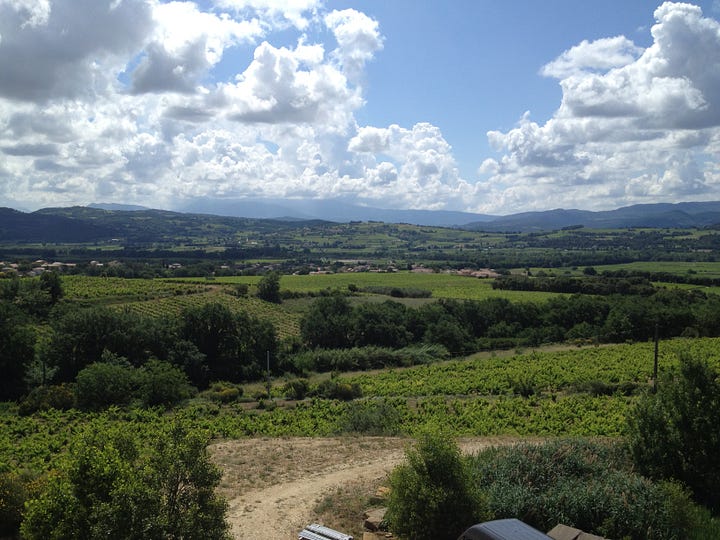
In addition to being a dowser, Alain Viret is also a practitioner of ‘cosmoculture’, an agricultural approach that includes cosmic forces. Developed by an engineer-inventor named T. Galen Hieronymus, who wanted to improve soil by channelling life forces (as well as telluric forces) using cosmic energy transmitted through cosmic pipes. Cosmoculture is a kind of field broadcasting that can send messages through the soil to discourage pests and predators, but also encourage vines to send their vines deeper to seek water. There is of course considerable scepticism around such practices but the Virets have found verifiable advantages with their cosmic pipes. Either way, being this attuned to nature and the forces of the cosmos invites an approach that is attentive, respectful, reflective and very open-minded.
Our tasting included eight wines, and regardless of what one might make of cosmoculture, the wines are exceptional. The domain has over 100 grape varieties, which adds to the renown of this extraordinary and often transcendent domain. The effect is multi-layered and slow maceration and aging create depth, complexity, and highly nuanced wines that thrill the palate. Again, our party were so impressed, there was a spontaneous purchase of several cases. ‘In vino veritas’.
To read the rest of this singular wine adventure, stay tuned for the next instalment, which I will hopefully have for you next week. In the meanwhile, please consider becoming a paid subscriber, booking a wine walk, or booking a life-changing wine tour!
Santé!
Thank you for letting me into your world and for reading the Paris Wine Walks Substack. Your support is invaluable as are your comments, suggestions, critiques, dreams, thoughts and remembrances. A little encouragement goes a long way, so please consider a paid subscription, which need cost no more than (a cheap) glass of wine per week. Or, book a wine walk! Or simply ‘like’ us!
My book, ‘The Hidden Vineyards of Paris’ (reviewed in Jancis Robinson’s wine blog, the Wine Economist, National Geographic Traveler UK, UK Telegraph) is available for purchase via our website and at anglophone bookshops and wine shops in Paris. You can also find it at the Musée de Montmartre and the Librairie Gourmande.
Wine Walks & Tastings!
Operating throughout the summer
Discover the real story of Paris by joining any one of our walking tours, the only natural wine tours in Paris that include vineyard visits!
Paris Wine Walks is a reader-supported publication. To receive new posts and support my work, consider becoming a free or paid subscriber.

